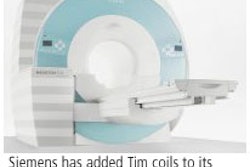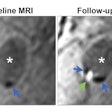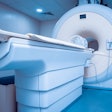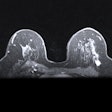The most common mistake in MRI facility planning, design, and construction is to use the vendor template -- verbatim -- as your suite design.
Don't get us wrong; manufacturers' templates are incredibly valuable in assessing the minimum technical requirements for operating and servicing the MRI equipment. But if you believe that the vendor-provided floor plans address the full range of safety, image-quality, patient throughput, operational, equipment interference, and payor issues, think again.
The information available in the siting manuals for the major MRI equipment vendors is technically exhaustive. And in those instances when we've had questions that weren't addressed in the siting manuals, we've been very fortunate to have most questions answered by the vendor engineering staff.
But have you ever stopped to ask yourself what needs to be in an MRI suite beyond the computer room, magnet room, and control room -- the only three rooms typically shown on a vendor template? If the American College of Radiology's (ACR) "White Paper on MR Safety" outlines four patient safety zones, how is this achieved in only three rooms, one of which patients never enter?
The fact is that suite safety issues are just one of the aspects of real-world MRI suites that the vendor templates don't address. Below is a list of 10 problems that are found in many vendor templates.
Hand washing: Physician's offices have had hand sinks for at least a generation, yet many current vendor magnet room templates still don't include hand sinks. With all the problems there are keeping MRI suites clean, plus the increasing use of suites for interventional procedures, it seems inconceivable that hand sinks aren't at least shown as an option to address growing infection control concerns.
Emergency exhaust: A crucial backup to the cryogen vent, the emergency exhaust fan can quickly evacuate cryogen vapors that may back up into the room in the event of a quench. Though emergency exhaust systems are referenced once or twice in multipage siting material, their layout isn't included in the templates of many vendors. Incorrect design or positioning of emergency exhaust or transfer grille components by design professionals can render these safety features useless, or even increase certain hazards.
Cryogen vent discharge: Vendors do include cryogen vents in their templates, but most don't graphically depict the recommended safety clearances at the point of discharge. These safety clearances apply not only to persons who may be in the area of discharge, but also to serviceable equipment, air intakes, or operable windows that may be near the cryogen vent or emergency exhaust discharge locations.
ACR four-zone patient screening: Magnetic field hazards aren't limited to the magnet room, and patient screening prior to entering the high-strength magnetic field is vital. Yet magnet vendors only provide the magnet room, control room, and equipment room in their templates, without even so much as a disclaimer to safety and operational issues that extend beyond these three rooms and perhaps outside the building. Those are left to facility operators and their design professionals.
Image quality: Generic vendor templates define the maximum allowable ferrous content for shimming thresholds, but don't explain that "operational tolerances" and "optimal image quality" can be miles apart. If an MRI installation is expected to provide top-quality images five or 10 years from now, then every effort should be taken to design the suite that will protect the quality of the clinical image and extend the useful life of the MRI.
Patient throughput: A magnet may make a cluster of rooms into an MRI suite but, by itself, it doesn't do anything to maximize efficiency and operational ease. Effective layout of support spaces (patient waiting, interview, screening, changing, holding, and so on) is vital to an efficient and effective patient flow. Focusing only on the magnet, control, and equipment rooms does nothing to provide an effective patient flow. Particularly with reduced reimbursements, suite efficiency and patient throughput are vital to the financial performance of a facility.
Upgradeability: When magnet room construction costs run more than $250 per square foot, it only makes sense to ensure that the building is suitable to support the next generation of magnets. Rooms built to the minimum specifications of many current vendor templates for 1.5-tesla systems would have a very hard time being adapted to support that same vendor's 3-tesla MRI units. Why build a suite that will require a couple hundred thousand dollars in renovations to support the next upgrade when you can now add the incremental room size or shielding at a fraction of the future costs?
Lines of sight: Many vendors show the console with a view into the bore of the magnet, but no information is provided about laying out the suite so that the technologist at the console also has direct lines of sight to the magnet room door, its approach, and, if possible, the patient holding area. In many MRI facilities, the technologist is the person principally responsible for patient safety throughout the MRI suite. How are they to monitor the activity and safety of patients anywhere other than inside the bore of the magnet if that's the only view they're afforded from the console?
Patient specific: Templates are, by definition, a "one-size-fits-all" solution. But patient populations and magnet use differ from facility to facility. Facilities that perform scans on patients under general anesthesia, treat only pediatric patients, or scan only emergent patients have vastly different room needs than a dedicated outpatient facility. Templates don't address those variables.
We trust them too much: Well, this is really a problem with us and not vendor templates. Templates do have a lot of very valuable information and can greatly facilitate siting an MRI. However, there is a vast amount of information that facility operators, technologists, administrators, engineers, and architects must bring to the design to have truly safe, effective and efficient suites.
Of course, some of these issues are ones that vendors should improve upon, but others outline areas where their responsibility should end and the responsibilities of the facility and its design professionals should begin.
Facilities, architects, and engineers should take vendor templates and learn every piece of technical information they can from them, and then they should begin to design the suite to fit the utilization, demographics, applications, and patient acuity specific to that installation. Those who copy and paste vendor templates and call it design may be doing so at the expense of image quality, safety, operational, and financial performance of an imaging suite.
Make sure your design professional understands the limitations of the vendor templates and other stock floor plans. If you have questions about their expertise, consider engaging an imaging design consultant to assist them. This could be as simple as a peer-review service for under $5,000, or more comprehensive equipment coordination support for around 1% of the MRI equipment cost. Given the significant revenue an MRI system can generate, this is a tiny price to pay for added patient safety, enhanced image quality, and extended equipment life.
By Robert Junk and Tobias Gilk
AuntMinnie.com contributing writers
December 8, 2005
Reprinted from www.mri-planning.com by permission of the authors. If you would like more information on any aspect of MR facility design or safety, please contact Robert Junk or Tobias Gilk at Jünk Architects.
Related Reading
Hitting the ceiling over HIPAA-required walls, December 6, 2005
Burying MRI construction mistakes: What you cannot see affects what you can, November 23, 2005
The new 'MR Safe': Language changes for the FDA, October 27, 2005
Cost of MRI mishaps makes safety investment profitable, October 14, 2005
Interim trailer leasing: The hidden cost of MRI suite renovations, September 28, 2005
Copyright © 2005 Jünk Architects, PC


.fFmgij6Hin.png?auto=compress%2Cformat&fit=crop&h=100&q=70&w=100)





.fFmgij6Hin.png?auto=compress%2Cformat&fit=crop&h=167&q=70&w=250)











